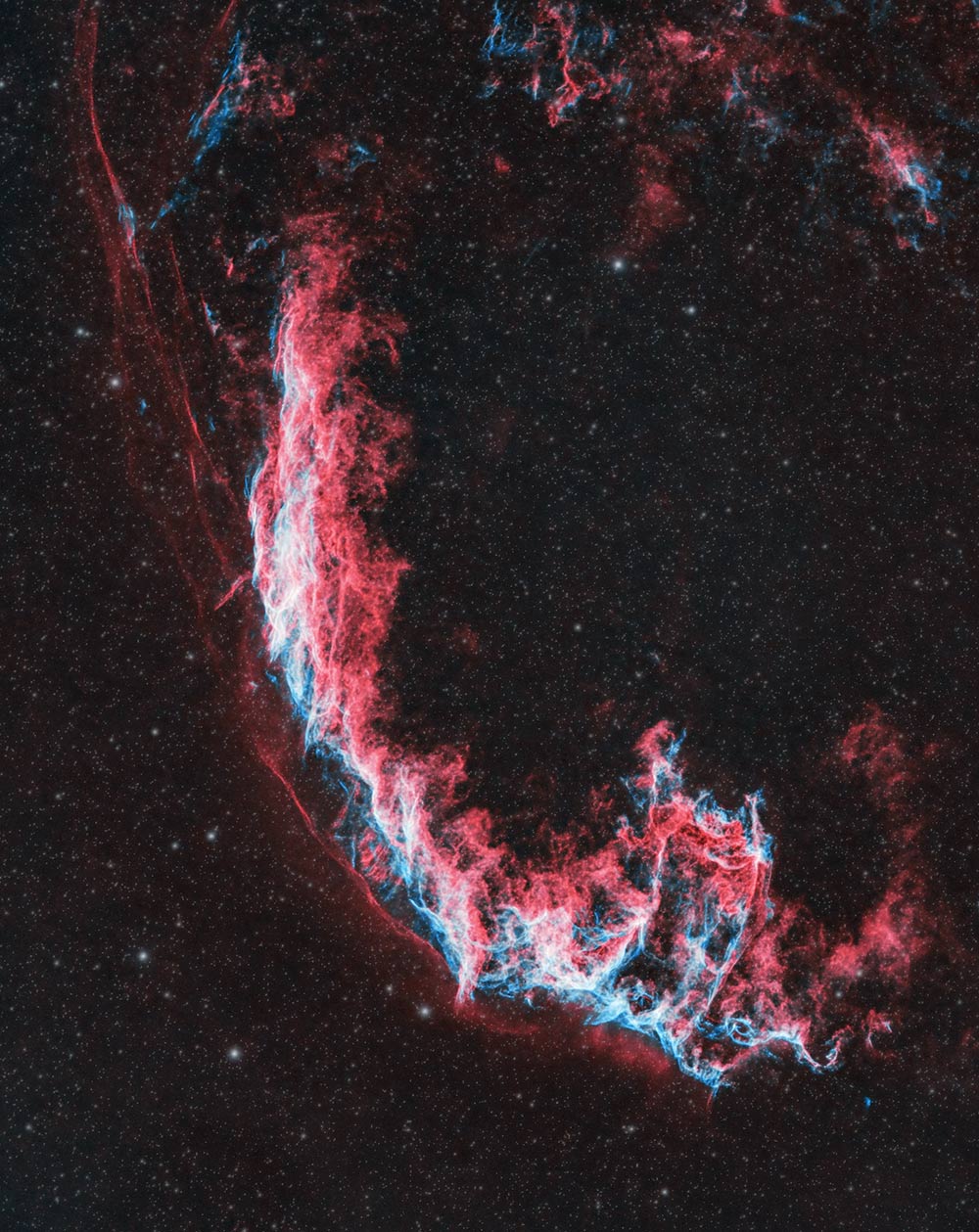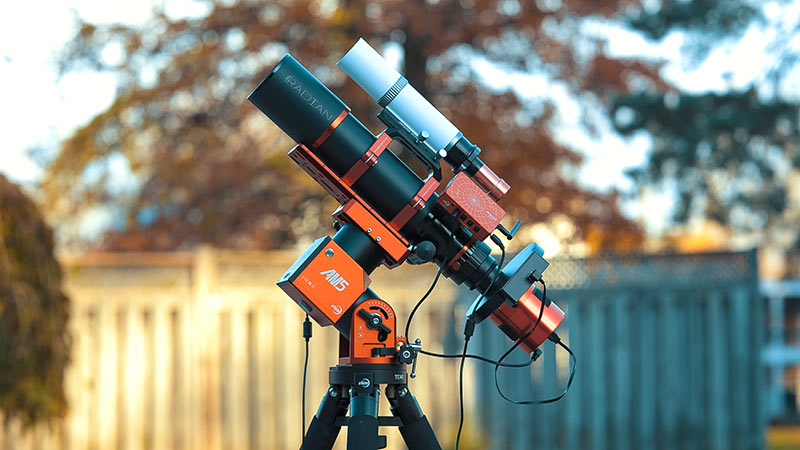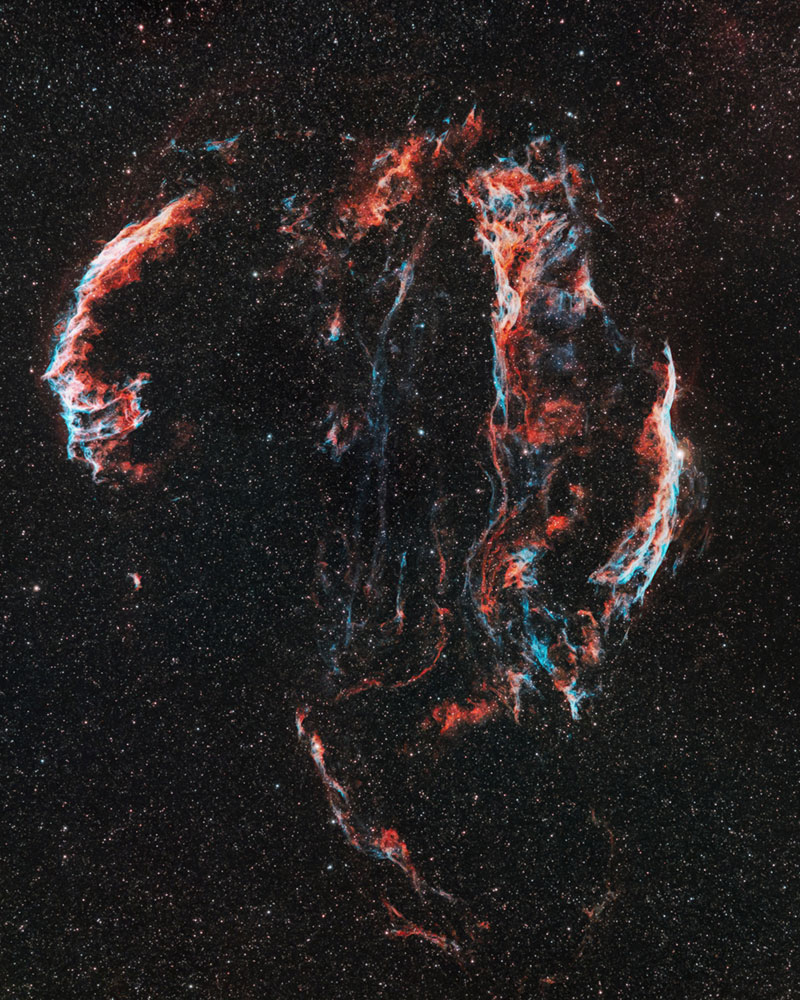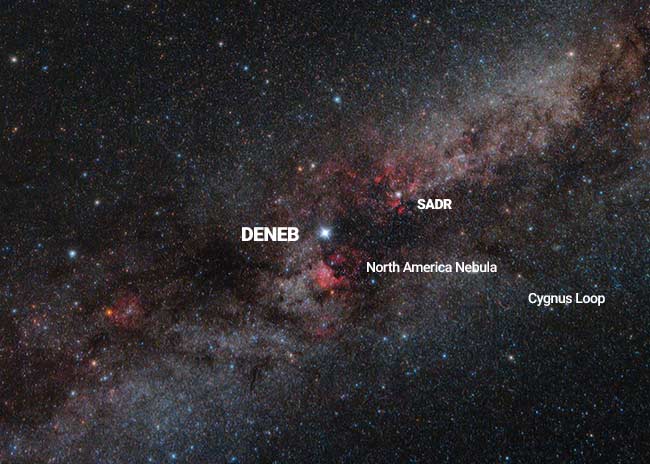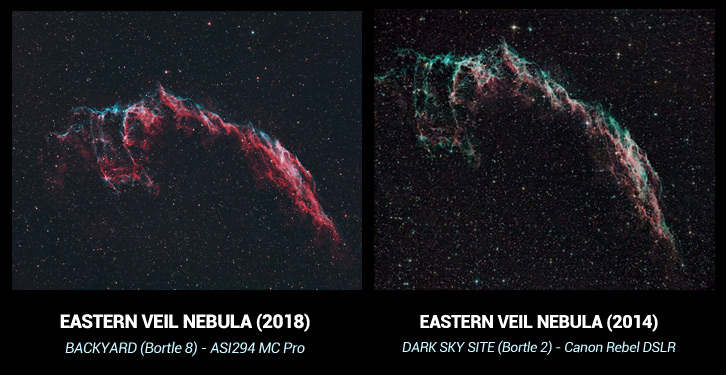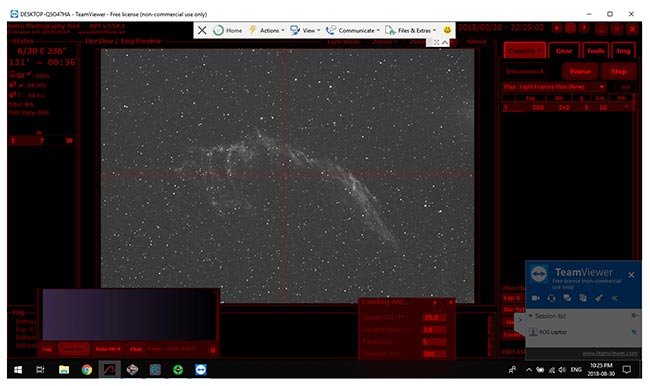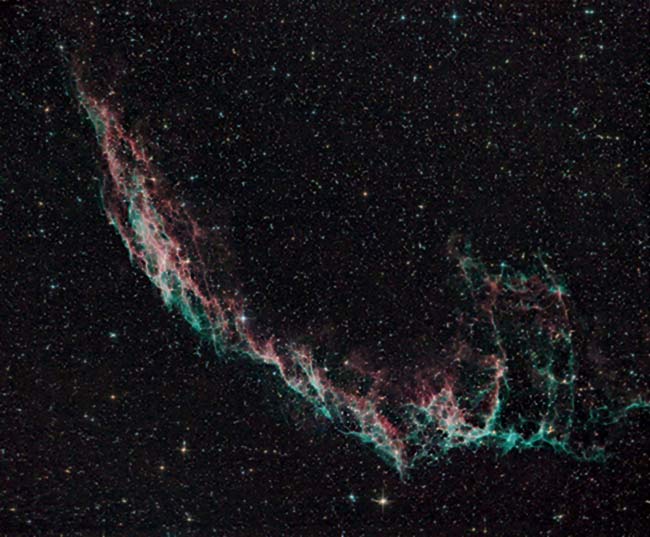The Eastern Veil Nebula
The Eastern Veil Nebula is a large supernova remnant in the constellation Cygnus. It is an expanding cloud created by the death of an exploded star. Scientists believe that the light from this supernova explosion reached Earth about 5000 years ago.
The ‘eastern’ portion is just a section of a much larger nebula complex known as the Cygnus Loop. This region also includes the Witches Broom Nebula (Western Veil Nebula, NGC 6960), and the Bat Nebula (IC 1340).
The image below shows the Veil Nebula captured through my telescope using a monochrome astronomy camera and narrowband filters. I captured over 4 hours of total exposure time to create the image in the HOO palette.
The Eastern Veil Nebula
The Eastern Veil Nebula. Radian 75 Petzval APO. ZWO ASI2600MM Pro.
The image above was captured from my light-polluted backyard (Bortle Class 6) with a bright moon nearby. The use of narrowband filters helps to isolate the wavelengths of light emitted by the gases in the nebula.
Here is a photo of the astrophotography telescope used to capture the Veil Nebula. It is a 75mm Petzval apochromatic refractor with a focal length of roughly 400mm. The camera and telescope mount are controlled via the ZWO ASIAIR Plus.
The camera and telescope used to photograph the Eastern Veil Nebula.
The Cygnus Loop
The complete Veil Nebula complex (The Cygnus Loop) contains three prominent deep sky objects, the Eastern Veil, the Western Veil, and Pickering’s Triangle. In the image below you can see the Veil Nebula complex in its entirety, captured with a wide-field refractor telescope.
The Western Veil Nebula Complex.
The entire Cygnus Loop area takes up about 3 degrees in the night sky, equal to 6 full moons. Here are the cataloged names of each portion in case you want to point your GoTo equatorial telescope mount toward these fascinating supernova remnants:
- The Western Veil – NGC 6960
- The Eastern Veil – NGC 6992
- Pickering’s Triangle – NGC 6964
- The Bat Nebula – IC 1340
Where is the Veil Nebula located?
To find the Veil Nebula, start with Deneb in Cygnus. Deneb is a blue-white supergiant type of star. It is one of the brightest stars in the night sky, and one of the 3 stars of the Summer Triangle.
From there, work your way over to the left of the “cross” in Cynus the swan (see the image below). A computerized GoTo telescope mount will make finding the Veil much easier, but don’t expect to see very much of this faint Supernova remnant with the naked eye.
A telescope with at least 8-inches of aperture, such as a Dobsonian reflector will show a faint glow in from the Veil Nebula through the telescope eyepiece. I find the easiest potion to spot visually to be the center of the Witch Broom Nebula (western portion), and then you can hop over to the Eastern Veil portion from there.
The location of the Veil Nebula in Cygnus.
Astrophotography
The Veil Nebula is an excellent astrophotography subject for your camera and telescope. Because of its large size and relatively bright surface brightness, it is a suitable target for beginners.
The oxygen, sulfur, and hydrogen composition of this nebula make it a popular choice for deep sky astrophotographers capturing images using narrowband filters. It is also a great choice for the HOO palette, which only uses images captured in Ha and OIII.
Multi-bandpass narrowband filters are also a practical choice for photographing the Eastern Veil Nebula. For the image shown below, I used the Optolong L-eXtreme filter with my one-shot-color dedicated astronomy camera (QHY 268C).
A portion of the Eastern Veil Nebula captured using the Optolong L-eXtreme Filter.
Camera Settings and Tips
To capture the Veil Nebula (both eastern and western portions), I suggest shooting exposures of about 4-5 minutes each, with a cooled camera and a narrowband filter. A 12nm Ha filter does a great job of separating the Veil Nebula from a busy sea of stars beneath it.
My latest image of the Veil Nebula was taken with a ZWO ASI2600MM Pro, but any dedicated astronomy camera (mono or color) is well-suited for photographing this supernova remnant. A DSLR or mirrorless camera will also work, but your results may lack the ‘intensity’ of the images shared in this article.
Below, you’ll find a comparison image between my DSLR camera and a dedicated astronomy camera. The data is much cleaner in the dedicated CMOS camera image, thanks to the onboard thermo-electric cooling.
A wide-field refractor telescope is my preferred choice for large nebulae objects like the Veil Nebula. An Apochromatic refractor can produce crisp, high-contrast images of some of the most impressive objects in the night sky.
That is not to say that other telescope types can’t produce an image of this quality, it is just the design and user experience I prefer. You may prefer to use more aperture to photograph this target, using a Schmidt-Cassegrain telescope or Newtonian Reflector.
To control the camera and automate the exposure sequence (among other things), I use an image capture software application called Astro Photography Tool, or the ZWO ASIAIR.
In the screenshot below, you’ll see what a single 5-minute frame looks like of the Veil Nebula with a narrowband filter in front of the camera sensor.
As you can see, the single image frame needs a lot of processing to bring the details to the surface. This is a typical example of a preview image when capturing deep-sky nebulae with a narrowband filter.
A single 5-minute exposure of the Veil Nebula in narrowband Ha and OIII
A cooled astronomy camera will allow you to shoot longer narrowband images without introducing too much noise. This is especially important when shooting images of 5-minutes or more, as an uncooled DSLR will often create more noise as the sensor heats up.
Once the individual sub-exposures have been captured, I bring the light frames into DeepSkyStacker for registration and calibration. Here, I use dark calibration frames to help reduce the noise in the final integrated image.
The Veil Nebula with a DSLR Camera
I photographed this nebula from the extremely dark skies at Cherry Springs State Park in Pennsylvania. I spent two glorious nights at this astrophotographer’s paradise in June of 2014. For this photo, I used a modified DSLR camera through an 8″ Newtonian reflector.
I do enjoy the diffraction spikes created using a reflector, but I think I like the crisp, consistent results of an Apochromatic refractor telescope even more.
If you are interested in the equipment needed to capture images like this, have a look at this video where I break down each piece of the puzzle.
Deep-sky astrophotography can be hard to comprehend at first, but once you can master the process – you’ll have a sky full of targets to photograph.
